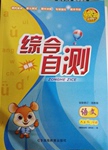题目内容
B. reflection
C. return
D. record

 口算题卡加应用题集训系列答案
口算题卡加应用题集训系列答案 综合自测系列答案
综合自测系列答案Down-to-earth means being honest, open, and easy to deal with. It is a pleasure to find someone who is down-to-earth. A person who is down-to-earth is easy to talk to. He or she accepts others as equals. A down-to-earth person may be an important member of society, of course, but they do not let their importance go to their heads, and they do not consider themselves to be better than others who are less important. Someone who is filled with self-importance and pride, often without cause, is said to have his nose in the air. There is no way a person with his nose in the air can be down-to-earth.
Americans use another expression that is similar in some way to down-to-earth. The expression is both feet on the ground. Someone with both feet on the ground is a person with a good understanding of reality. He has what is called common sense. He may have dreams but he does not allow them to block his knowledge of what is real. The opposite kind of person is one who has his head in the clouds. A man with his head in the clouds is a dreamer whose mind is not in the world. Sometimes such a dreamer can be brought back to reality; sharp words from the teacher, for example, can usually get a daydreaming student to put both feet back on the ground.
The person who is down-to-earth usually has both feet on the ground. But the opposite is not always true. Someone with both feet on the ground may not be as open and easy to deal with as someone who is down-to-earth. When we have both our feet firmly on the ground, we are realistic and we act honestly and openly toward others, and our lives are like the ground below us, solid and strong.
【小题1】If a person has his nose in the air, he ____.
| A.is down to the earth | B.is easy to deal with |
| C.always thinks he is more important than others | D.is confident |
| A.help a student get down to the earth |
| B.wake a student up |
| C.help a daydreaming student come down to the ground |
| D.help a daydreaming student to become more realistic |
| A.the person who has his nose in the air is not true |
| B.a man with his head in the clouds is often not intelligent |
| C.the opposite direction is always wrong |
| D.a person who has both feet on the ground may not be down-to-earth |
| A.down-to-earth | B.standing on the ground |
| C.with his nose in the air | D.with his head in the clouds |
Dangerous creatures
Some b each creatures are wonderful—like dolphins, but others are dangerous. Find out more about the dangerous ones –puffer fish, blue ringed octopus, and stingrays.
each creatures are wonderful—like dolphins, but others are dangerous. Find out more about the dangerous ones –puffer fish, blue ringed octopus, and stingrays.
The blue ringed octopus
The blue ringed octopus is not a very big creature but it is very dangerous.These octopuses are found all around the coast of Australia. They often lie in rock pools close to shore.
The blue ringed octopus is usually a dull colour but it shows its bright blue rings when it is in danger. If it is taken out of the water by someone, it is able to bite him and poison him.
If this creature bites someone, he will feel numbness (麻木) around the mouth, face and neck, Puffer Fish
Puffer Fish are found in all Australian seas. They are very easy to catch but must not be eaten because their flesh contains a poison.
Anyone who does eat the flesh can become sick very quickly. They may even stop breathing.
The Blue Bottle
The Blue Bottle is found in most Australian waters. Blue Bottles float lightly on the surface of the water but their tentacles(触角)can be as long as 10 meters.Blue Bottles are much less dangerous than some other jellyfish, but they can give a swimmer a bad sting(刺) if the swimmer accidentally touches them.
Stingrays
There are many different kinds of stingrays in Australian waters. They usually swim and feed on the bottom of the sea. Accidents can happen if people stand on them or try to pick them up.Stingrays have a sting on their tail. These stings have poison on them. If someone is stung, the wound can easily become infected.
【小题1】If you swim in Australian waters, you will probably .
| A.be bitten by the blue ringed octopus |
| B.stop breathing because of Puffer Fish |
| C.get a bad sting by the Blue Bottle |
| D.become infected by stingrays |
| A.the blue ringed octopus | B.puffer fish |
| C.the blue bottle | D.stingray s s |
 the following is that .
the following is that .| A.all creatures along the coast of Australia are dangerous |
| B.poisonous creatures change the body color when in danger |
| C.no accident will happen unless people touch these creatures |
| D.if people stand on the beach, accidents can happen because of creatures |
| A.dangerous creatures in the sea | B.interesting creatures in the ocean |
| C.wild creatures in Australia seas | D.different creatures in Australian waters |